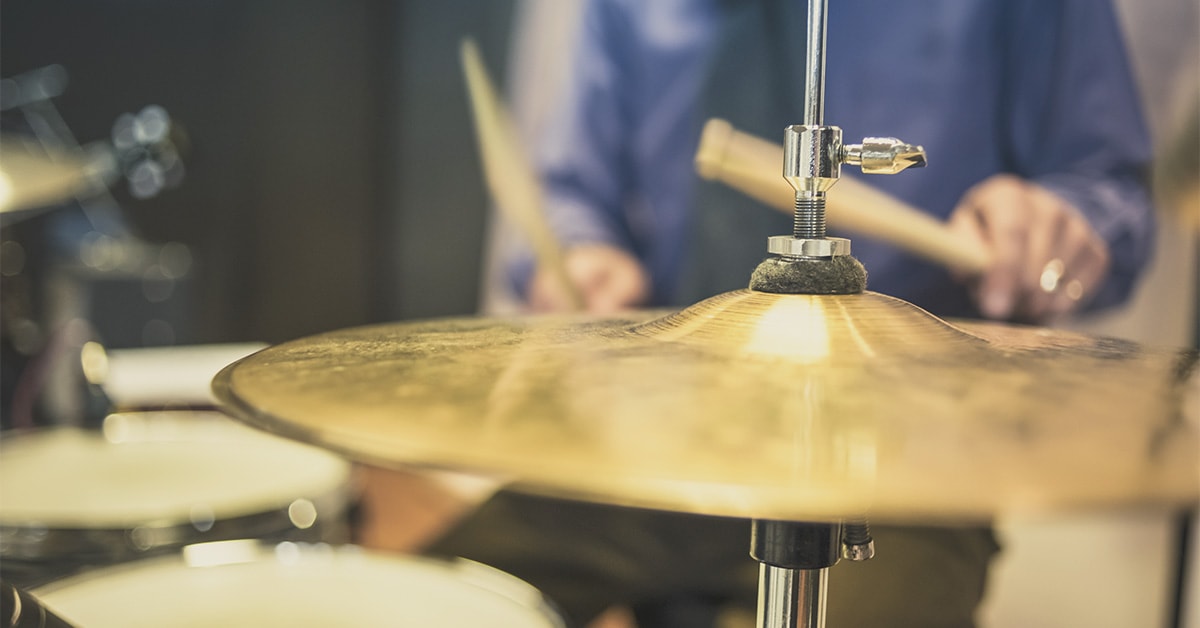If you’re finding yourself with a limited budget resulting in limited gear, you’re certainly not alone. The good news is technology has come a long way from the days of being limited to any sort of multi-track recording outside a 4-track recorder. Now, the most cost effective of digital audio workstations, paired with the power of today’s computers, provide us all with nearly unlimited options for recording multiple tracks, multiple takes, and multiple versions. However, even with these advantages, we still need a decent instrument and decent microphones to lay a strong foundation for a finished record. Thankfully, almost all live instruments can be recorded with just one or two microphones.
What about an acoustic drum set? It isn’t uncommon to see a minimum of 10 microphones surrounding the smallest of kits (ie a 4-piece kit). Not only does this present the challenge of needing a full-on mic locker at your disposal, it also presents challenges when considering the recording interface. Now we’re looking at needing 16 discreet inputs (given the 2, 4, 8 or 16 channel configurations found in most of today’s out of the box interfaces) to manage each of the microphones surrounding the kit. Sure, you could use an external mixer to create groups of microphones to feed a limited number of inputs; however, this is largely thought to be undesirable, as it requires a high level of commitment at the recording stage. Once these mics are grouped and recorded, there is little that can be done to adjust the individual levels, eq, etc…That said, this is how it used to be done as the norm and engineers became very adept and skilled with their recording technique, as commitment at this stage was the only option. Geoff Emerick, lead engineer for Sgt. Pepper’s (The Beatles) recorded the entire record using four track tape machines. Tracks were mixed down (committed) multiple times to accommodate all of the sounds Lennon wanted in the recording. Each of these ‘bounces’ required a commitment to the recorded sound; with the hope all elements would still maintain some presence by the time there was a final mix. This exemplifies the art of recording. The problem with all of today’s technology is the availability of so many options. For example, ‘Let’s just record a bunch of takes and comp it later’. Sound familiar? It’s not just the availability of unlimited tracks. Instead of a few choice outboard compressors, we now have a hundreds of options at the fraction of the price in the form of software plugins. How do you choose? How do you get to know which one is truly the best if you’re constantly choosing from hundreds of options? Technology has its wondrous merits; however, the options have significantly softened our ability to make firm commitments with a focus on capturing the best performance at the recording stage. All of this can teach us that the availability of fewer options could in fact be a blessing in disguise.
Now back to our drum recording dilemma. Let’s say you have a couple of dynamic microphones, a pair of condensers, and a recording interface with 4 inputs. This will afford you the ability to record just about any instrument, including an acoustic drum set of any size. The most important elements of a drum recording (other than the instrument and the player) are the Kick Drum and Snare Drum, followed by the toms (if played in the material) and lastly (but not least) the remaining elements such as hi hat, ride, crash cymbals etc. With this prioritization in mind, a dynamic mic on the Kick, a dynamic mic on the snare, and a stereo configuration of well-positioned overhead condenser mics (ie spaced pair, or X/Y configurations) will deliver phenomenal results. Not only that, since you are minimizing the number of microphones surrounding the kit, you will find yourself with less phasing issues, and a tighter, punchier drum sound. Your overheads will do a great job of capturing your toms and cymbals. You will certainly be more reliant on the quality of your recording room, and you will certainly need to spend some time experimenting with the overhead positioning to capture an adequate balance of your other shells and cymbals. However, for every challenge in your setup you are likely to find equal inspiration in the unique sound achieved with some creative engineering. Give it a shot, even if you’re loaded with microphones and inputs.










